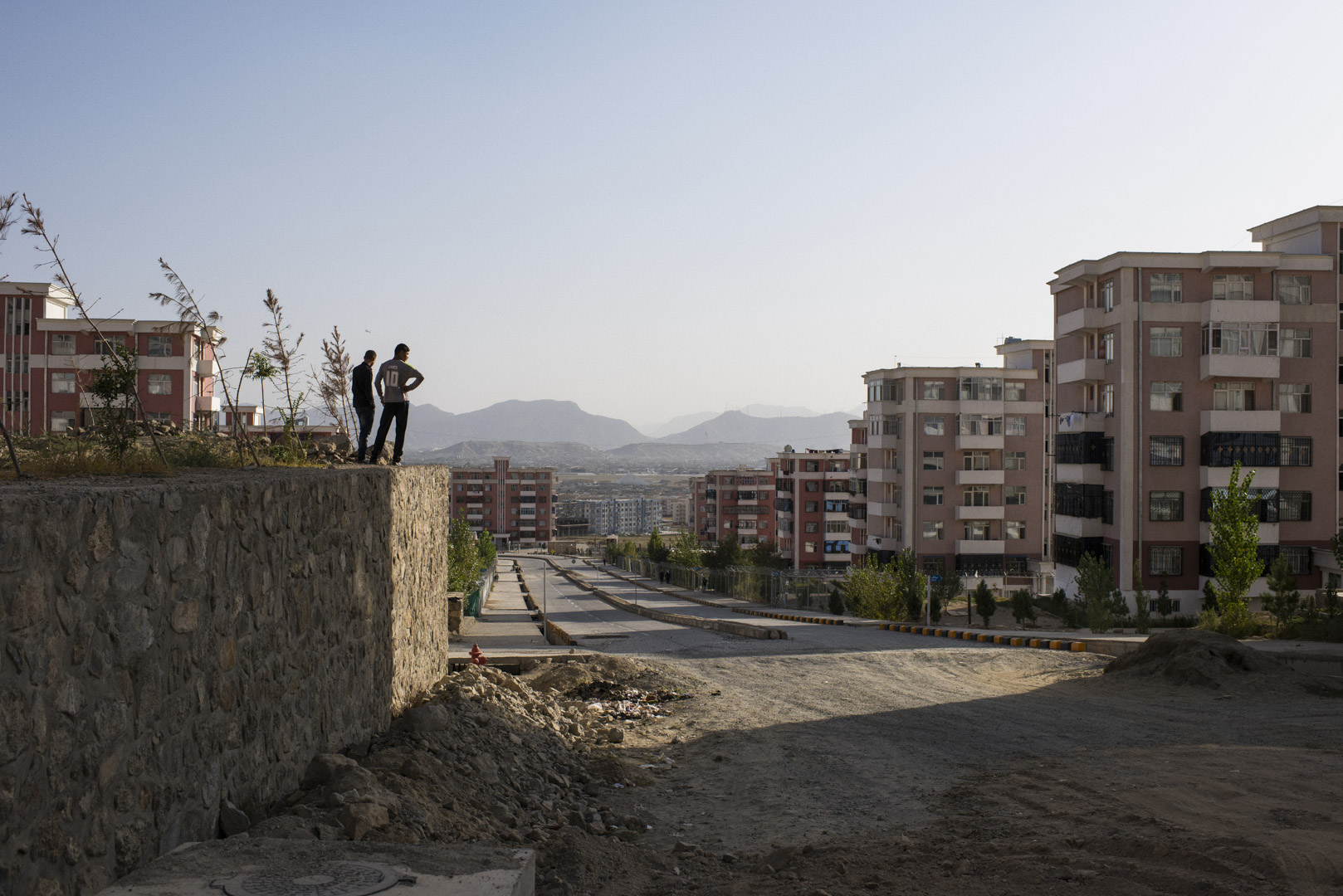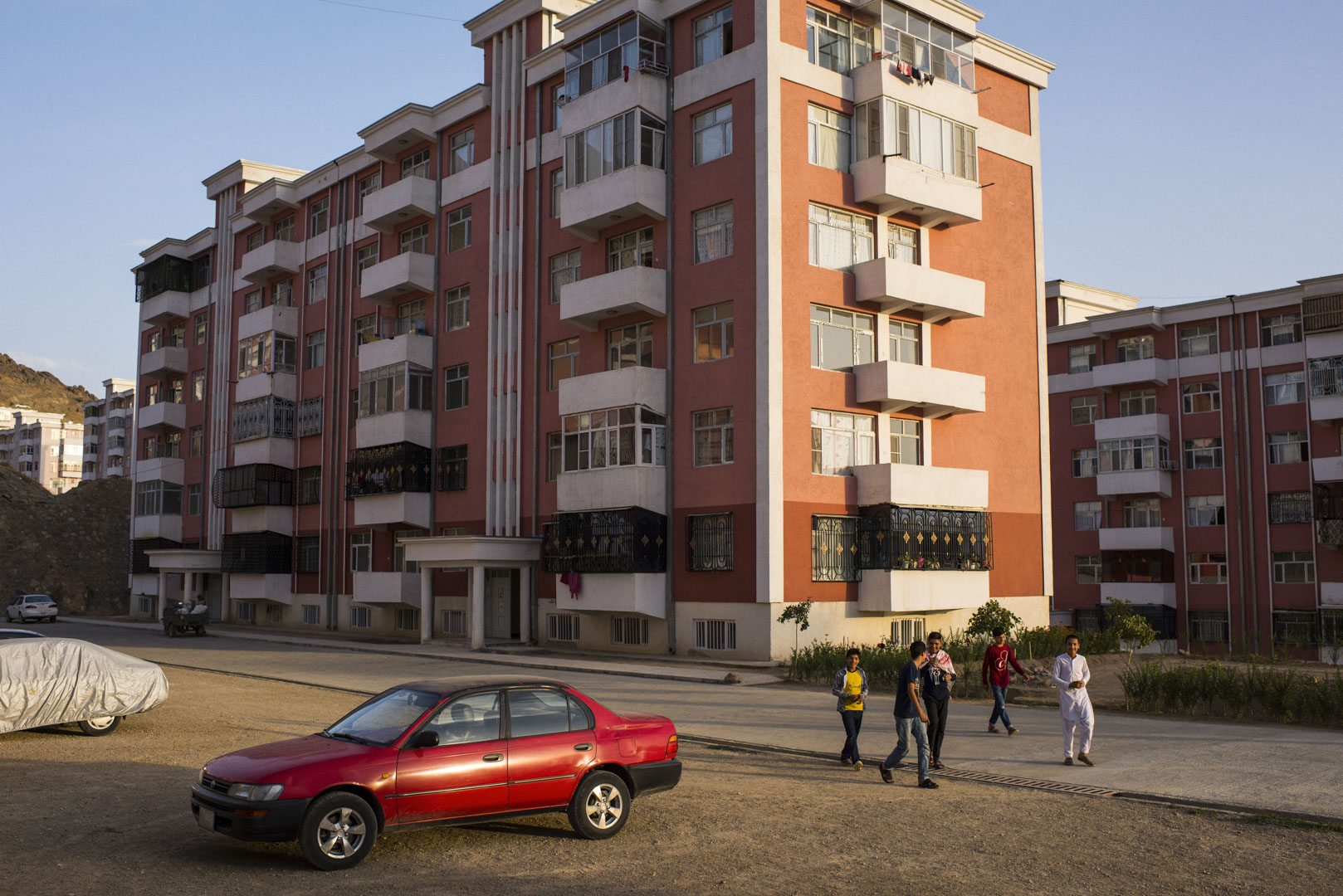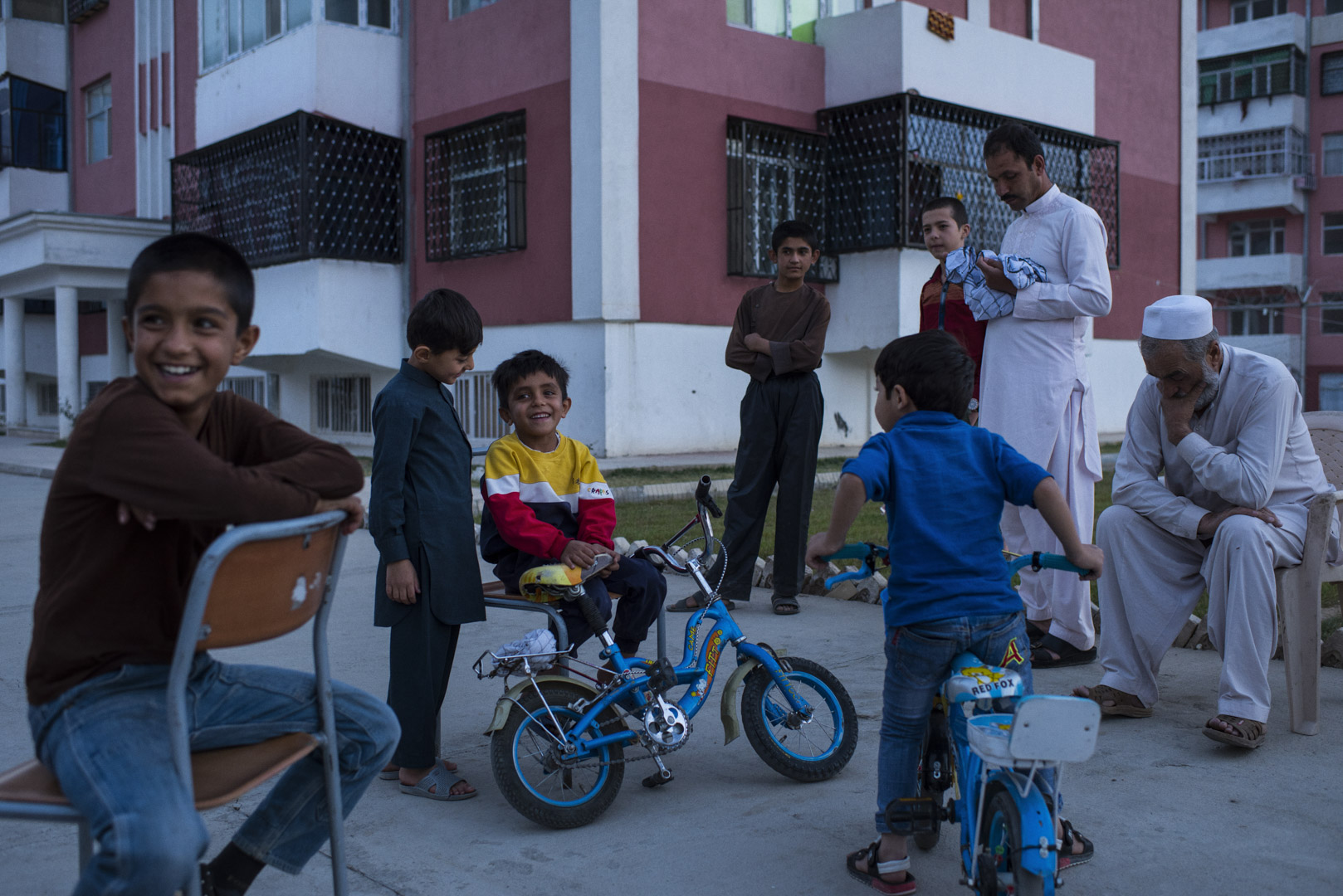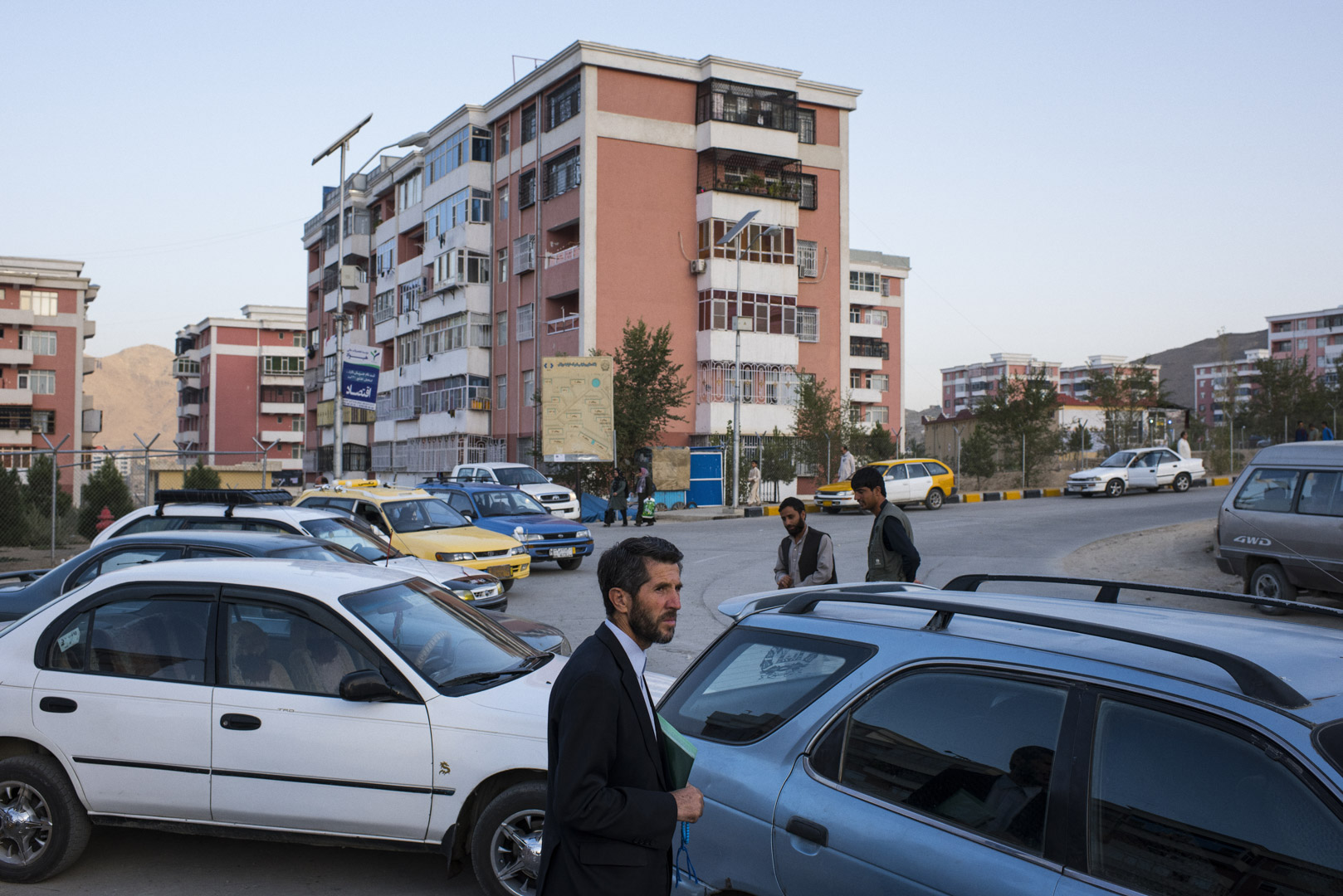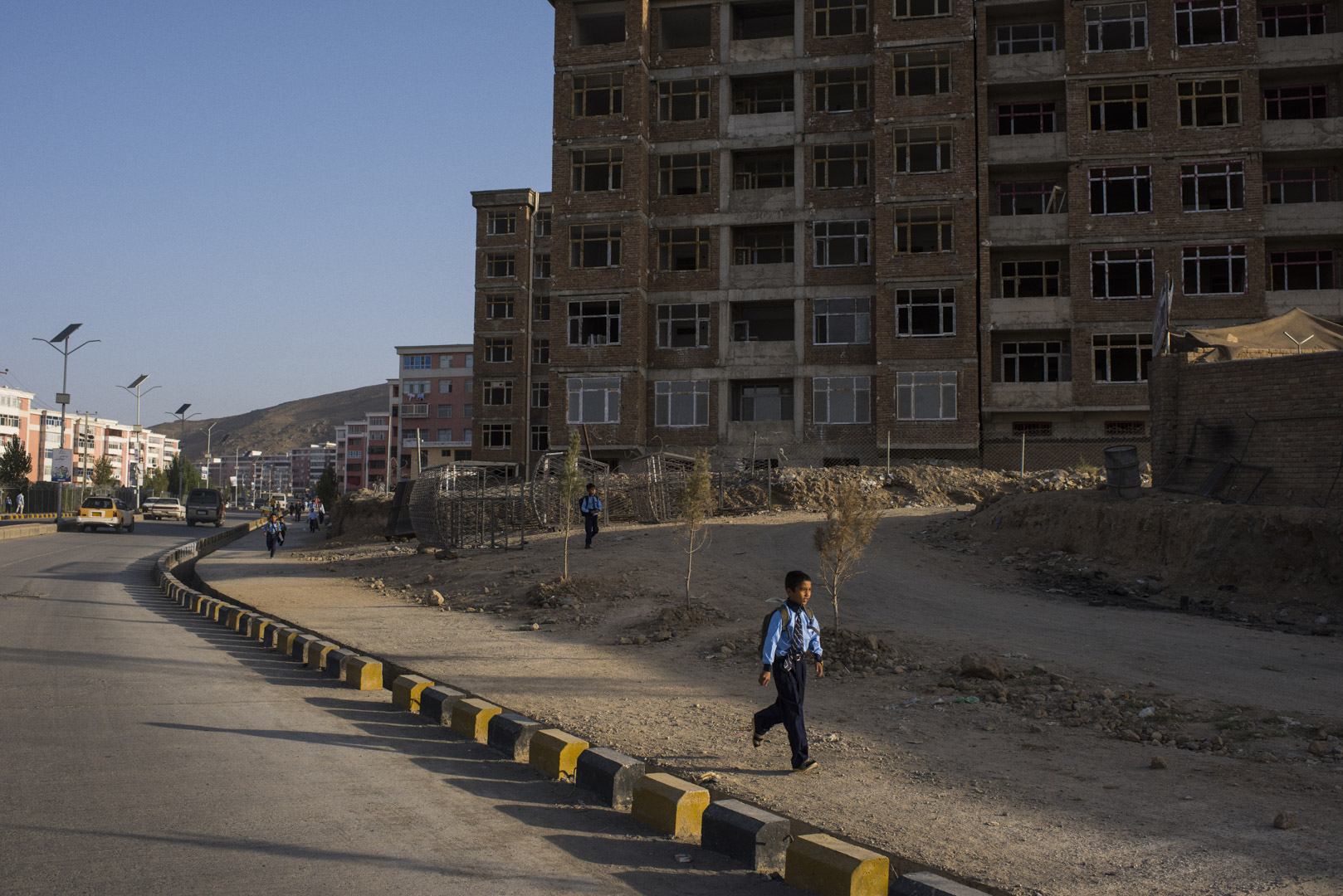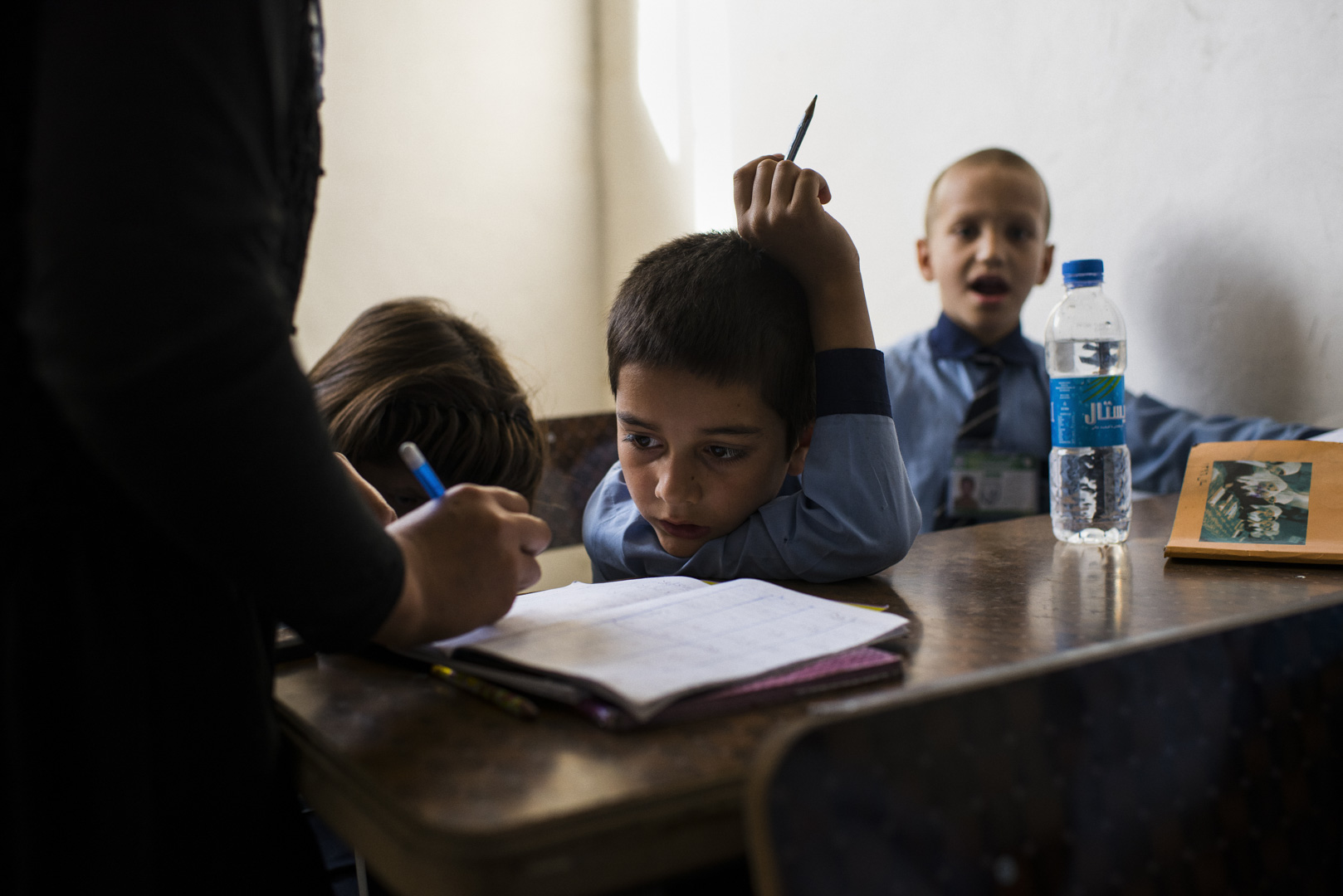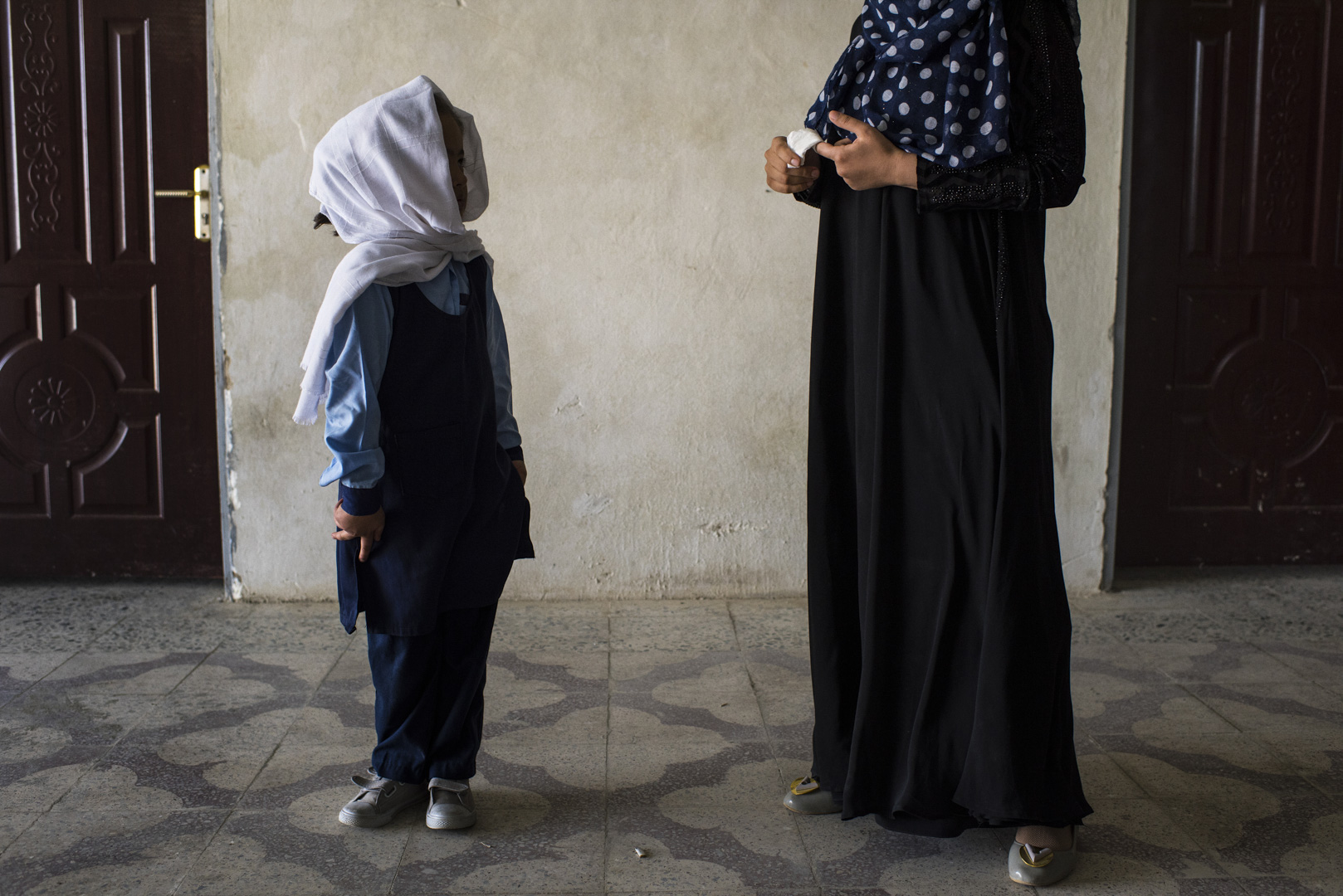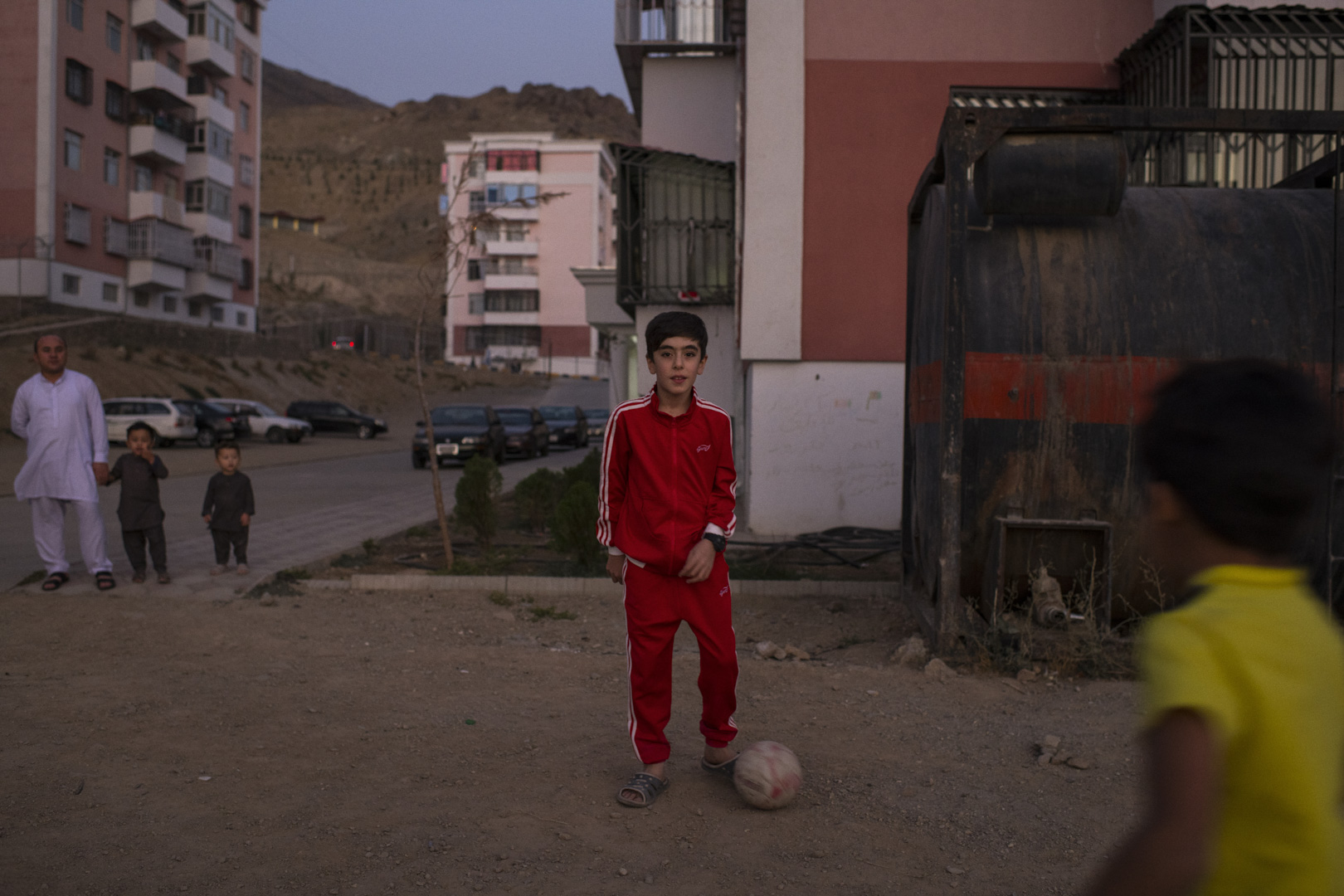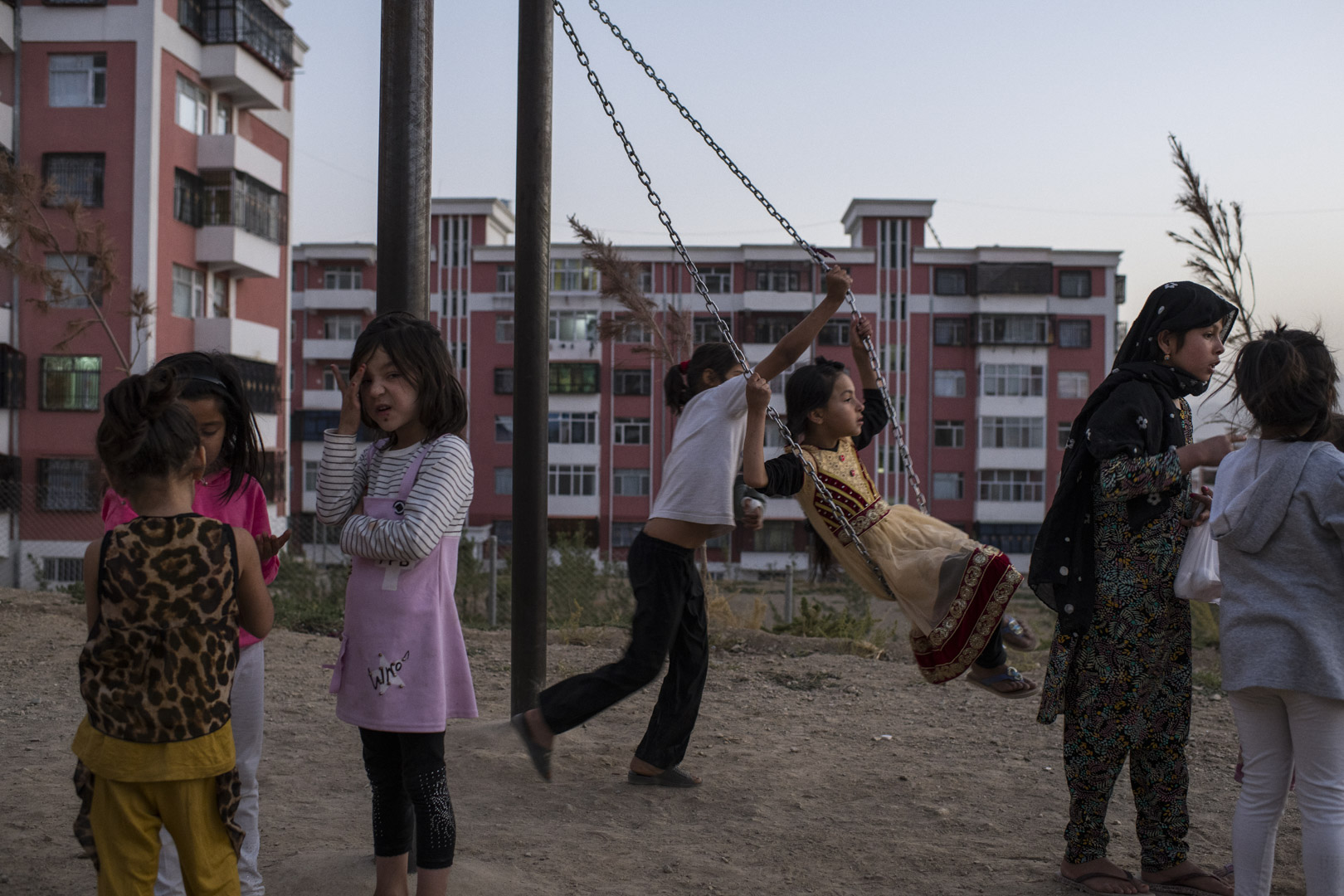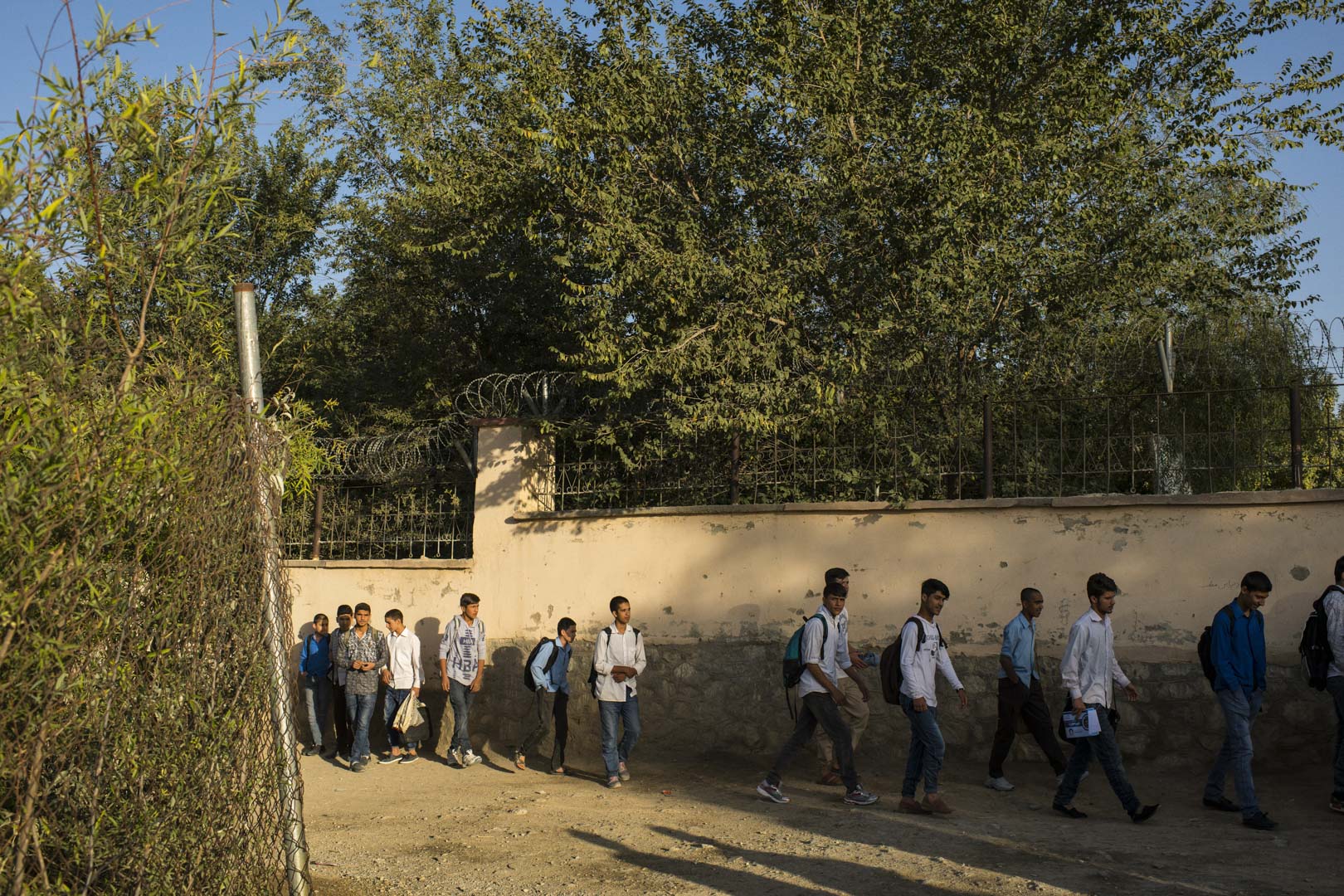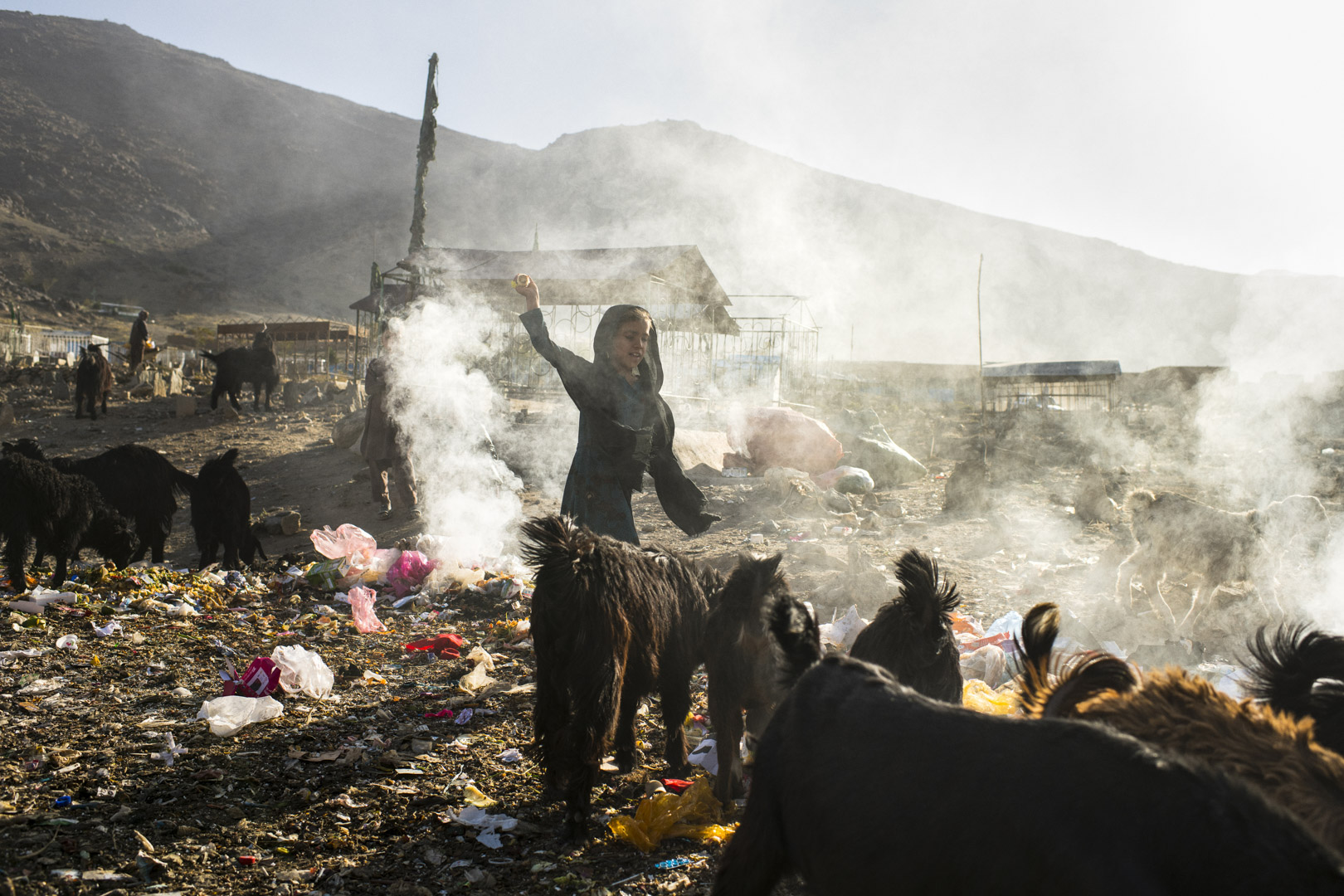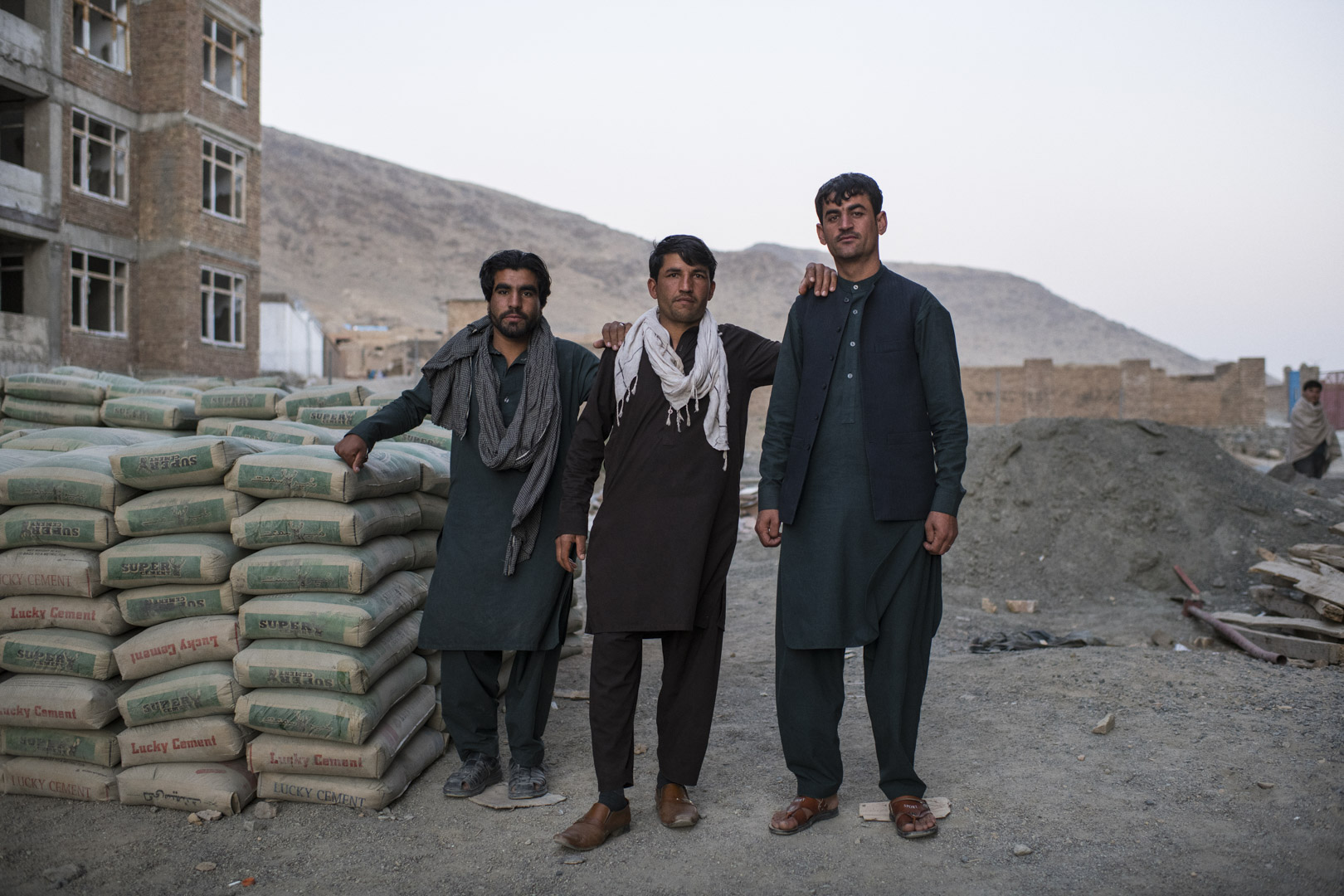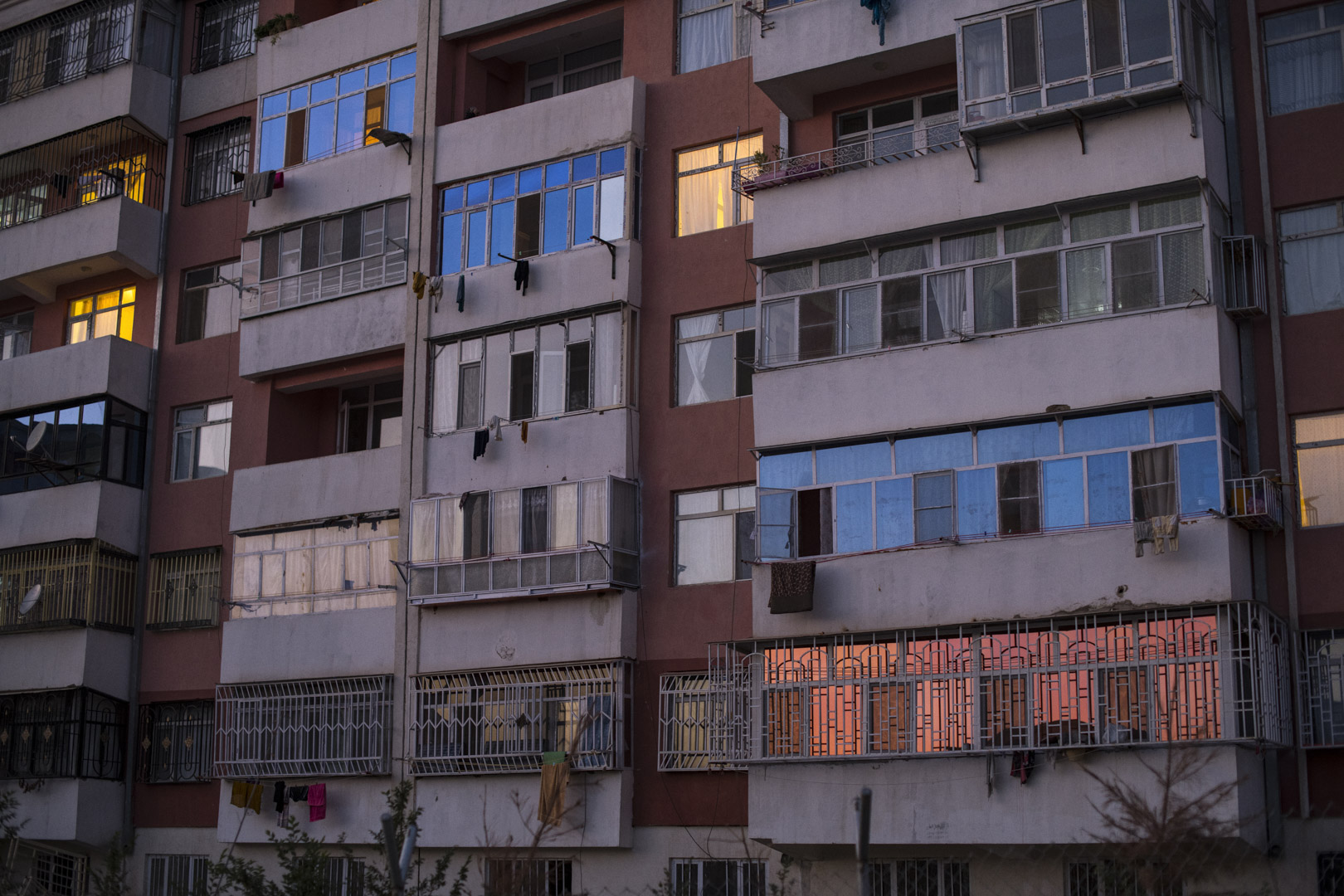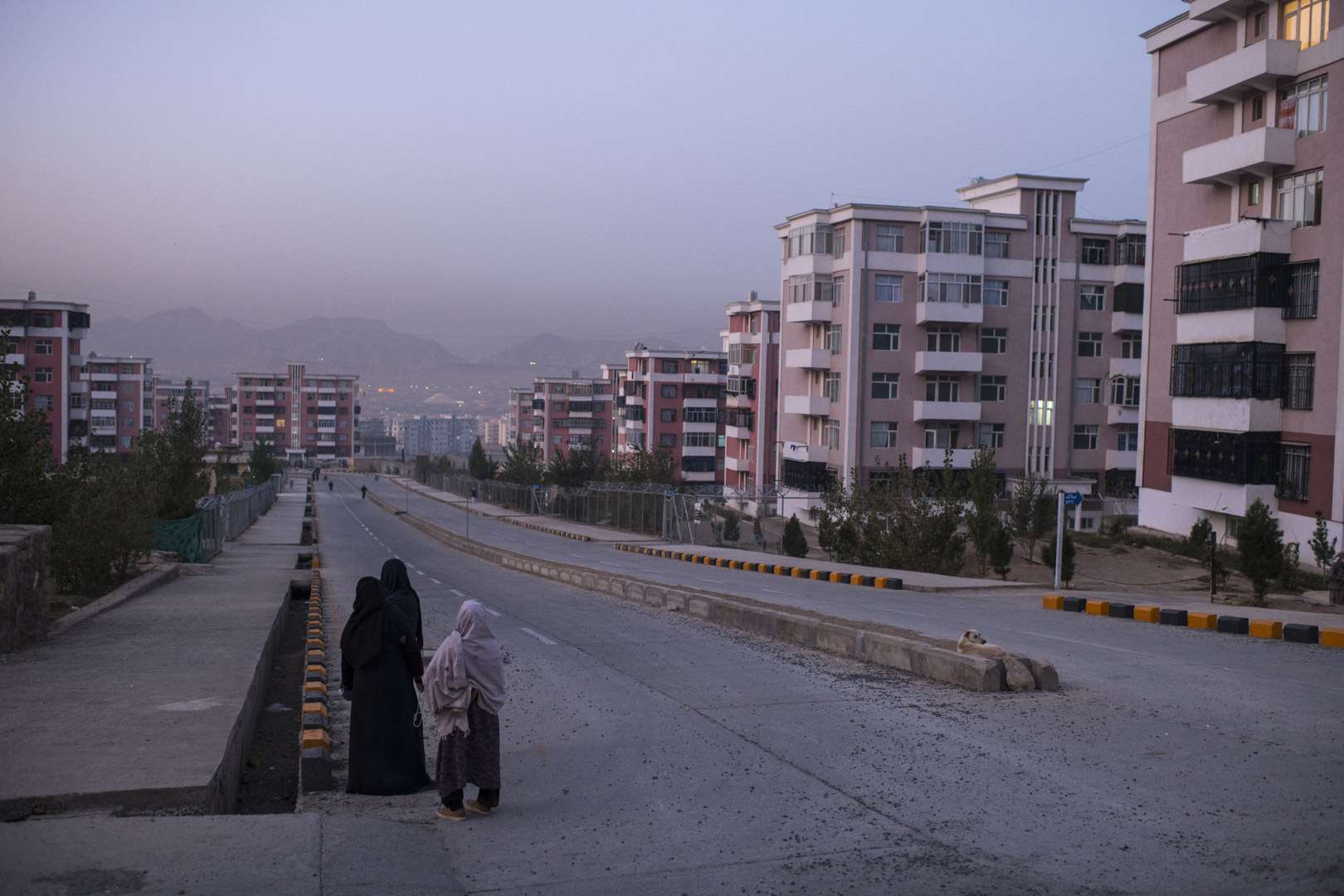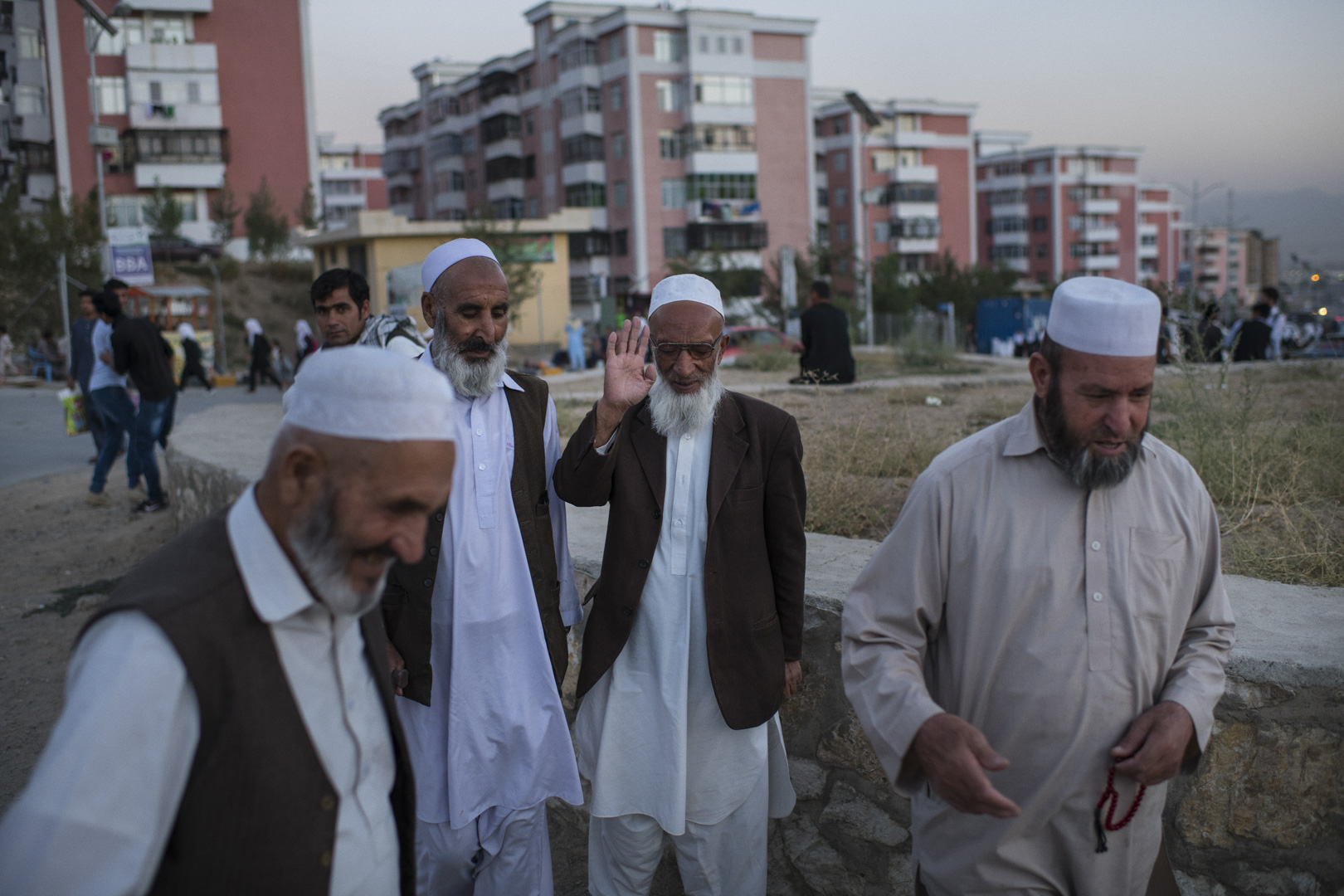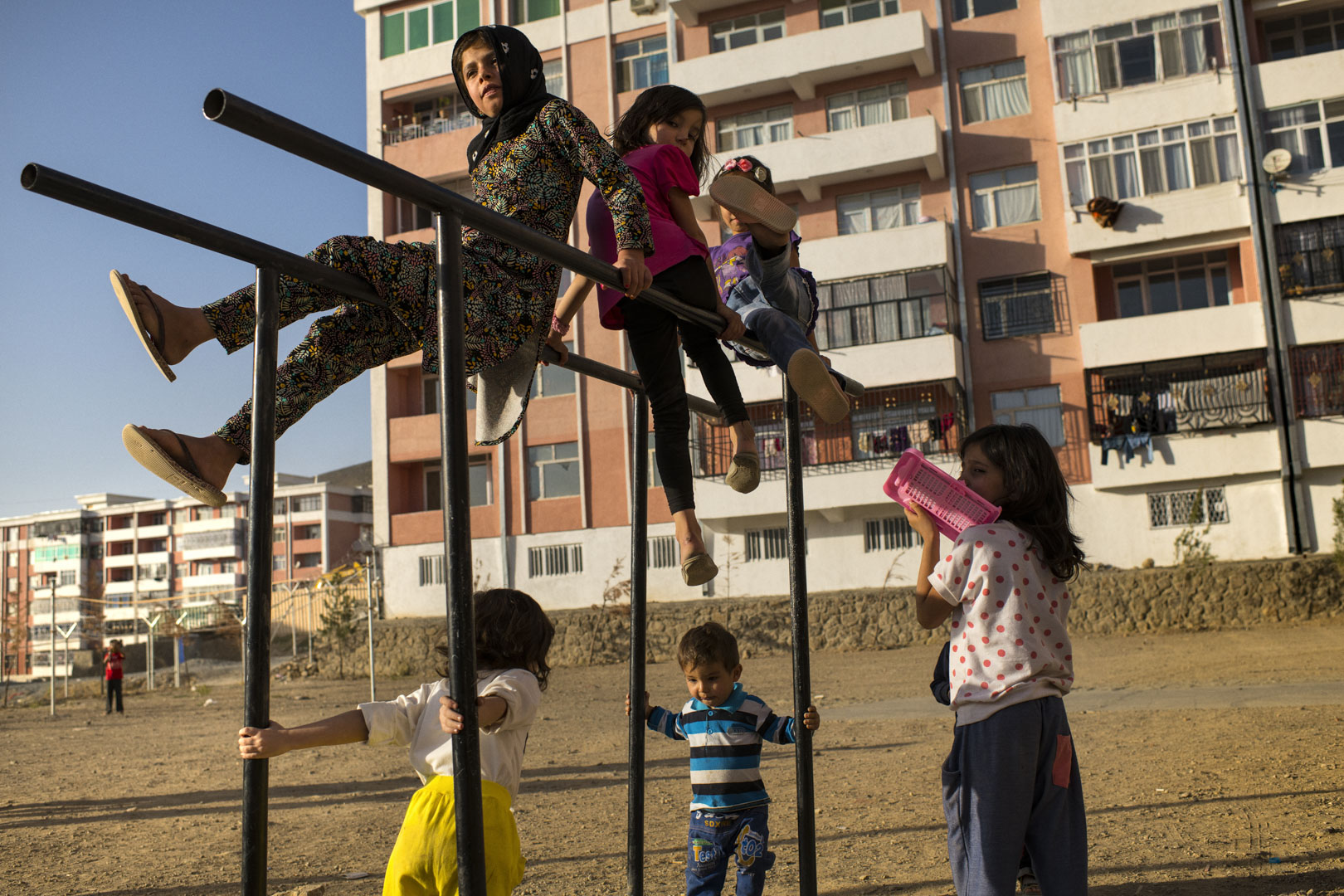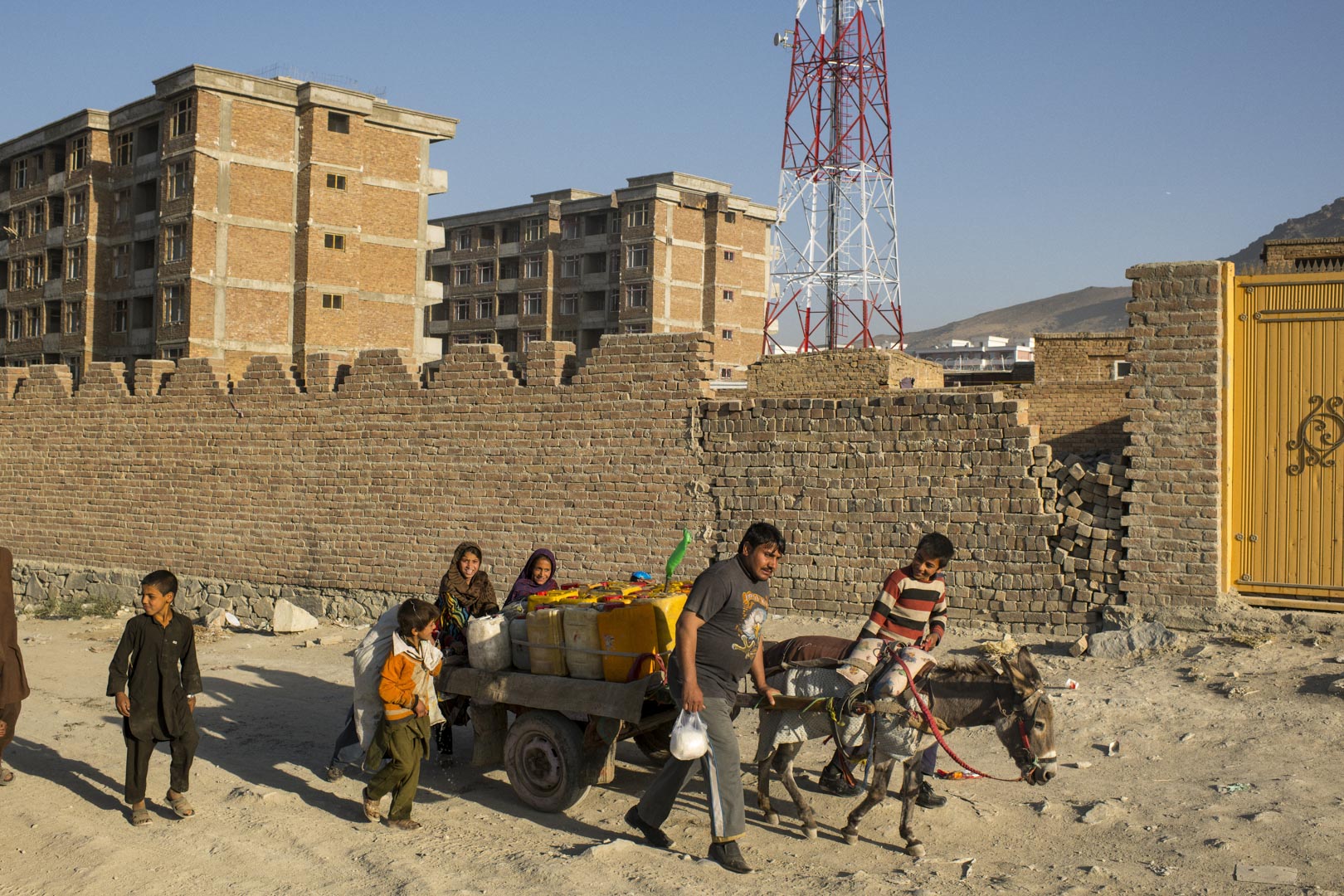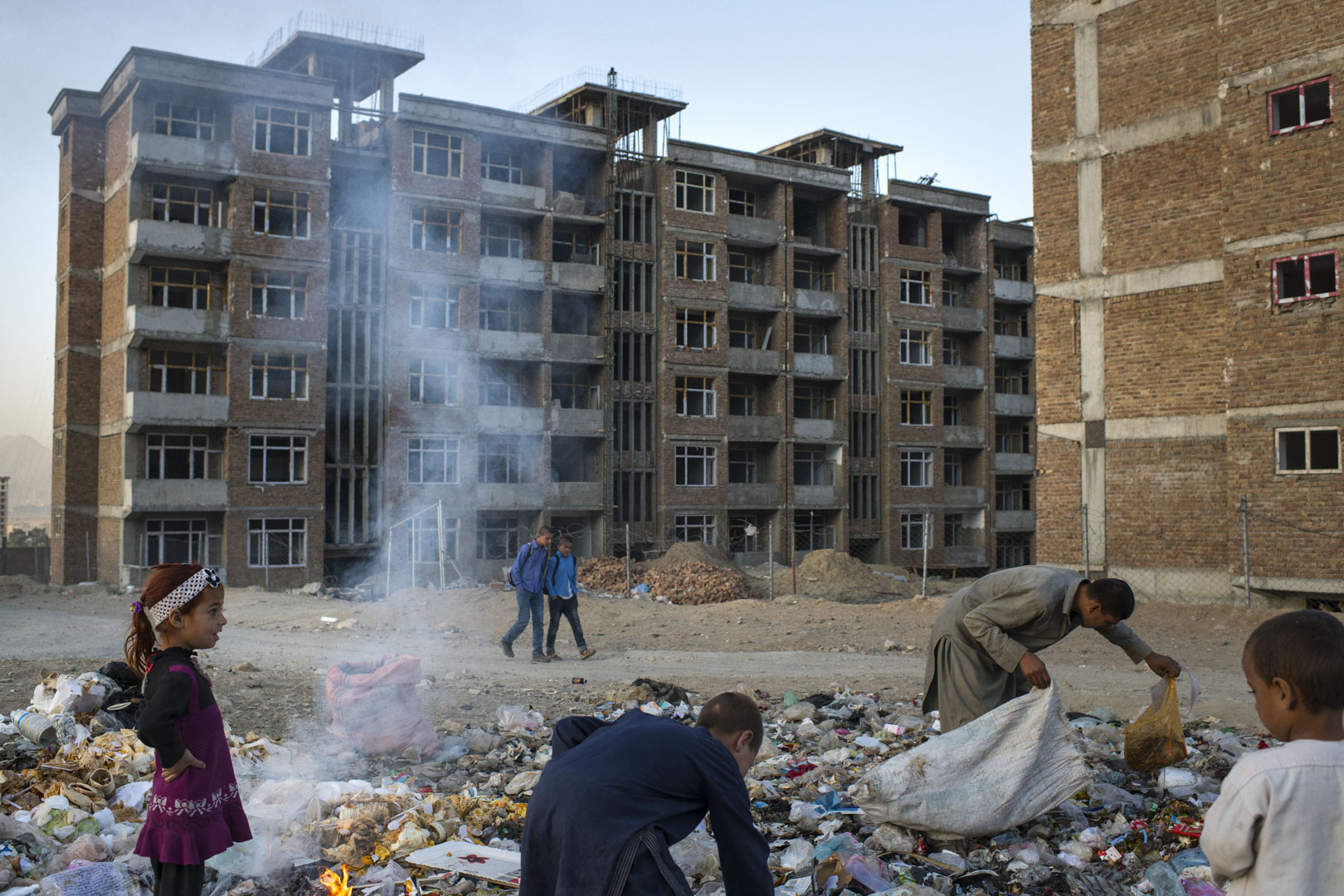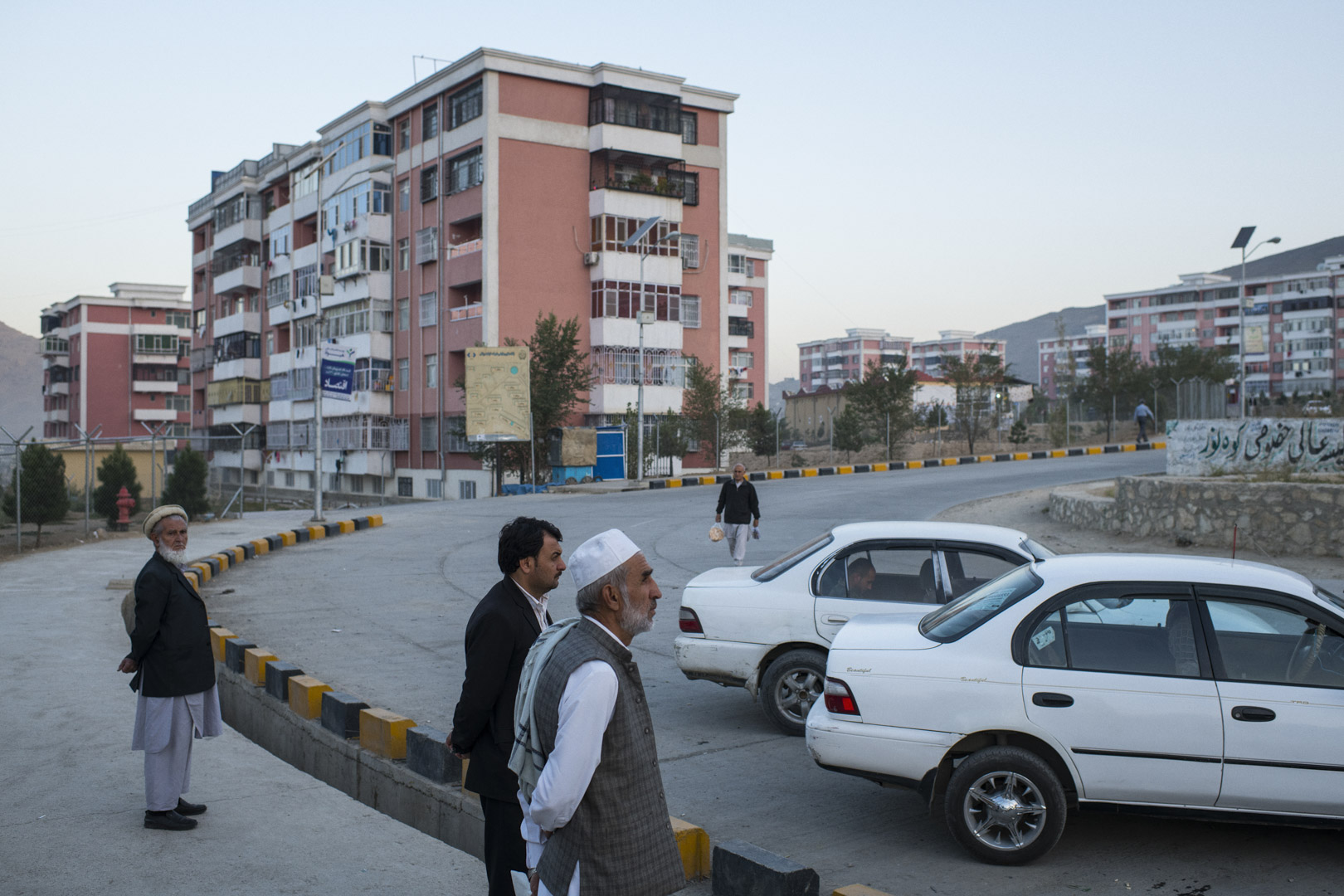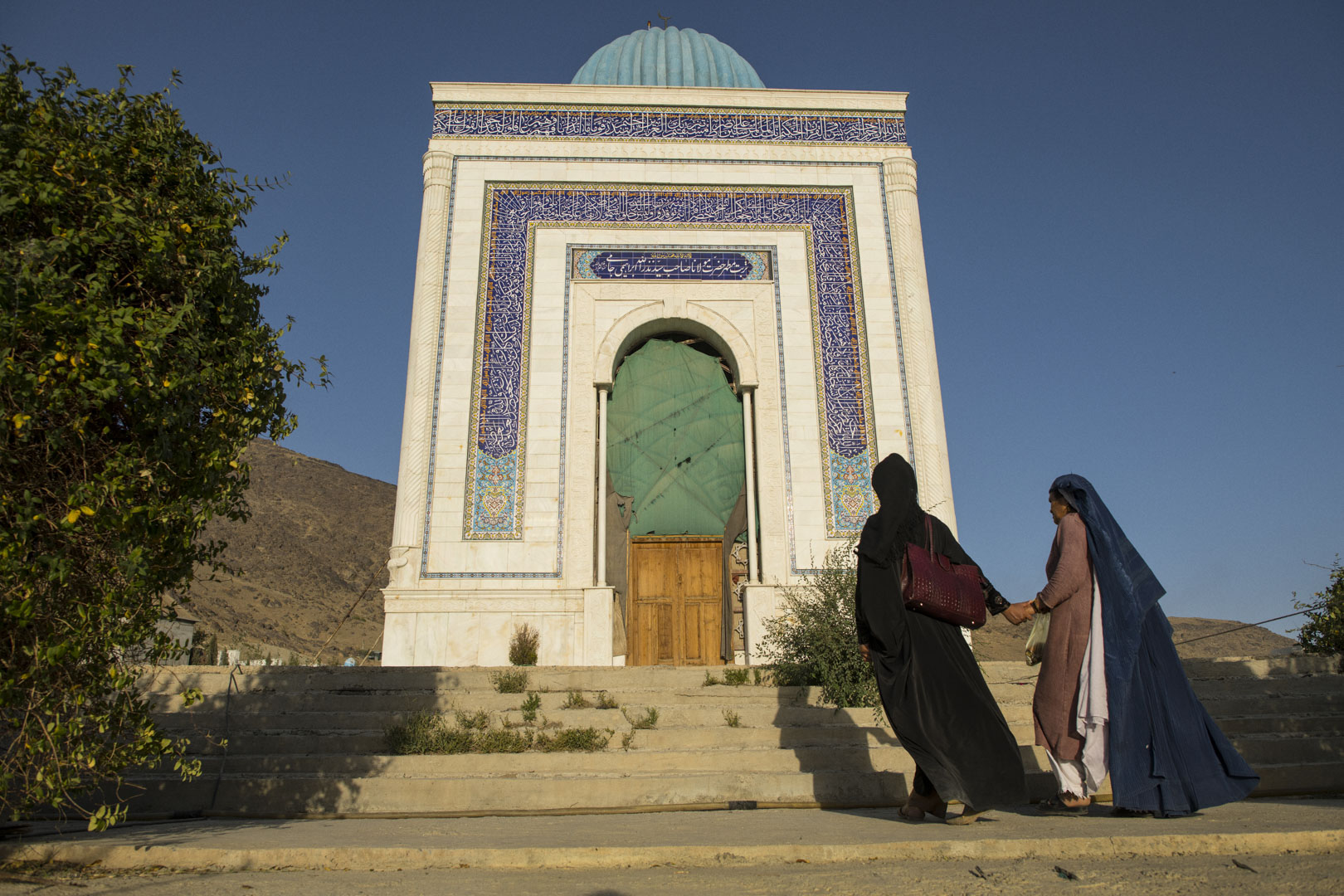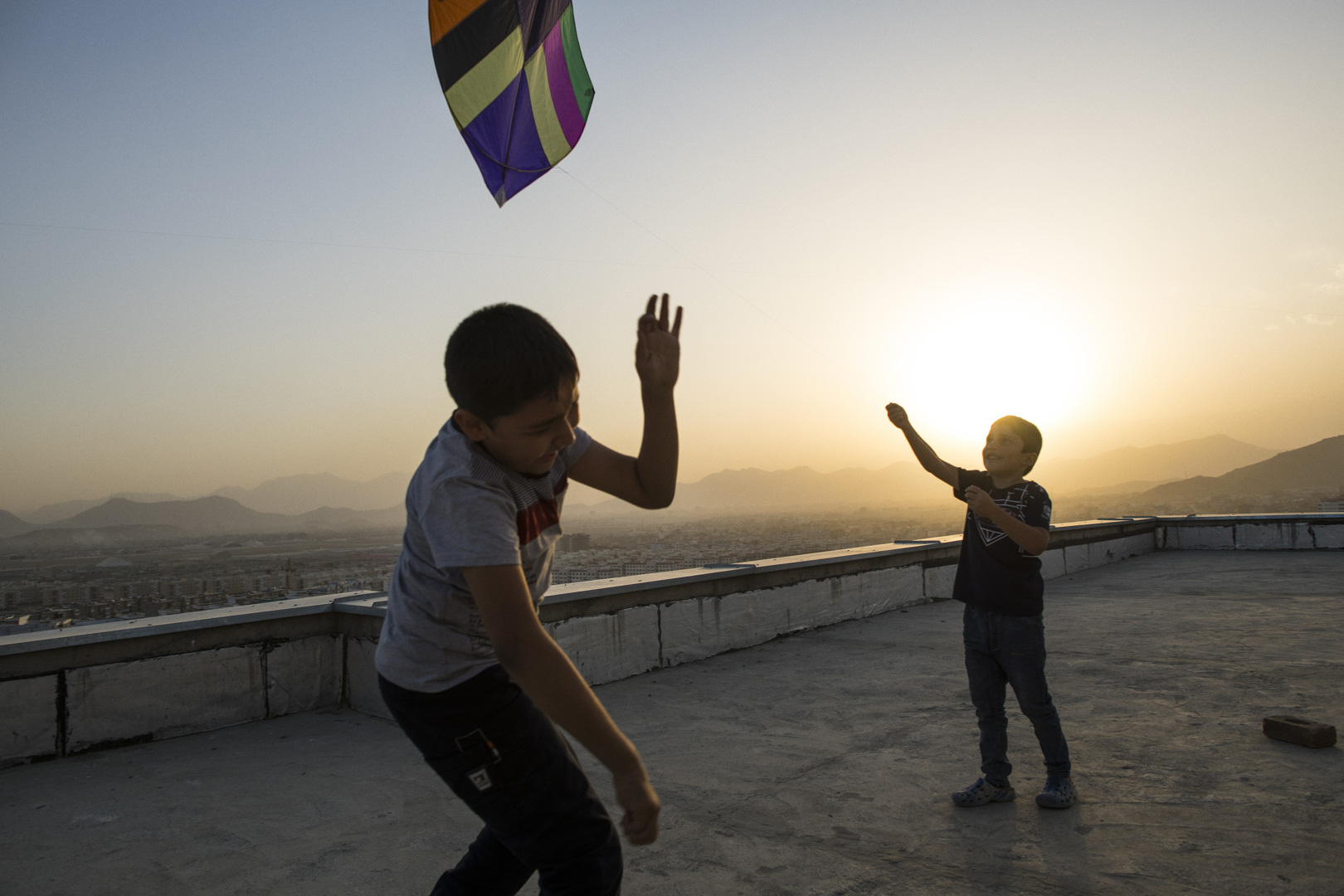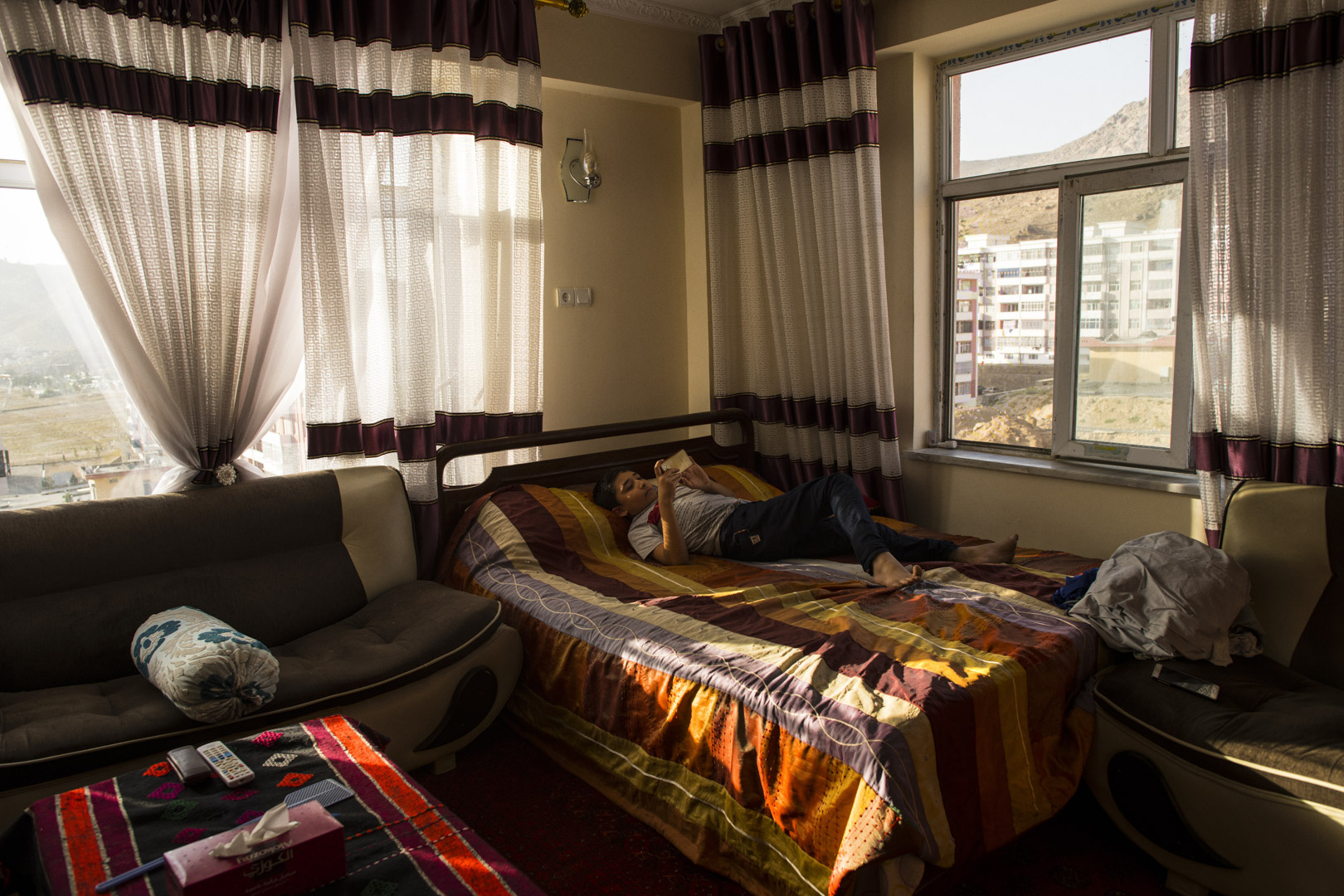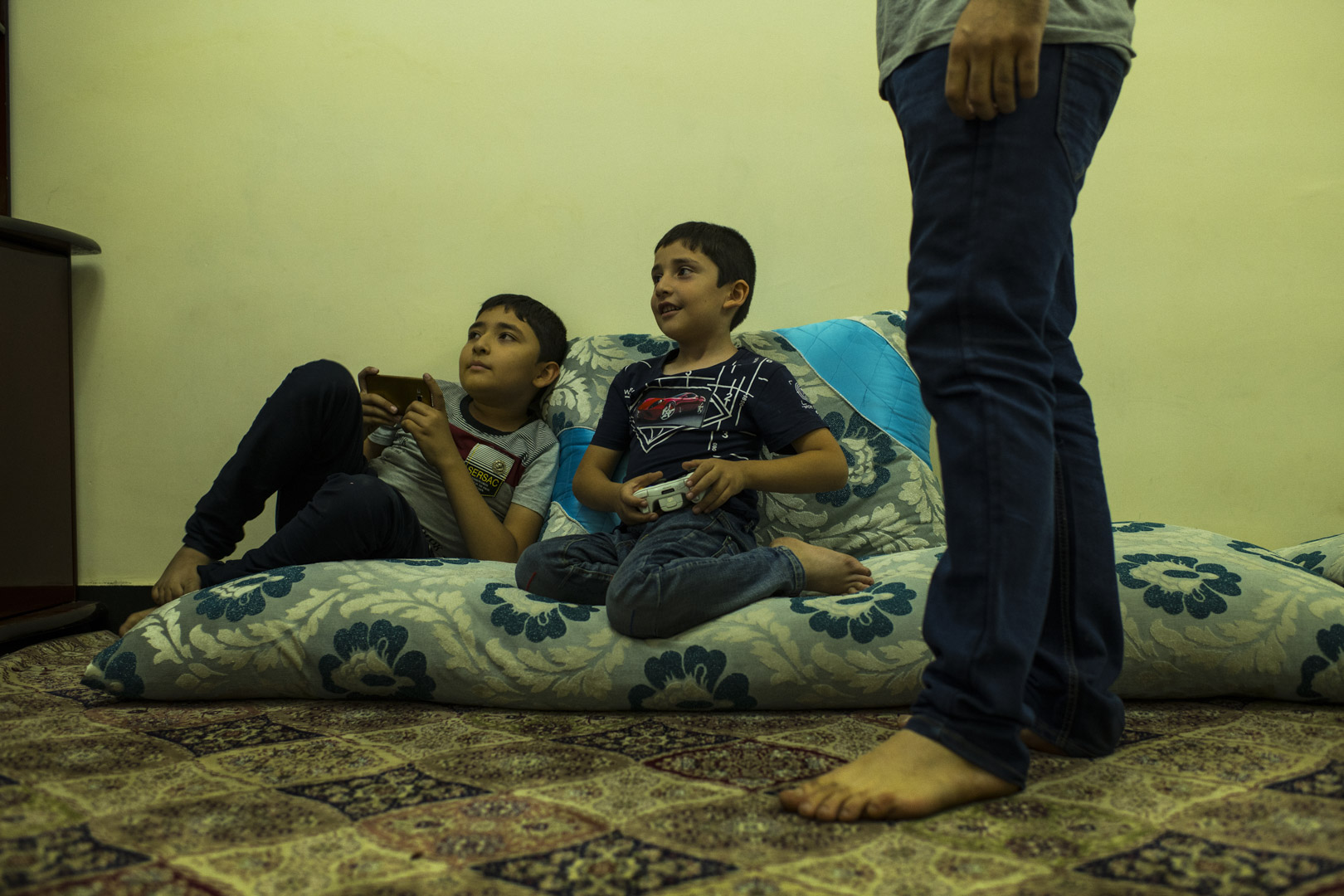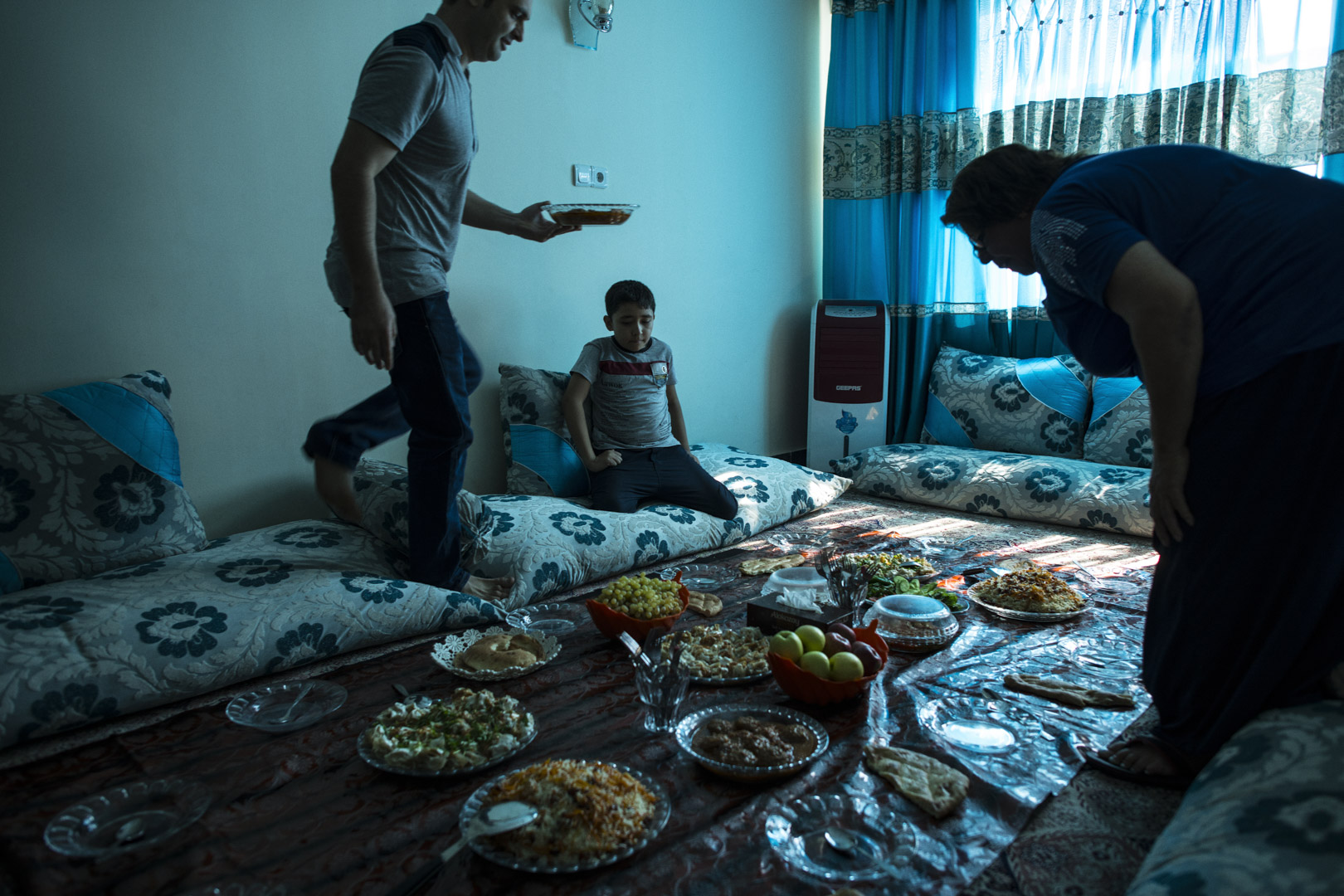Qasaba: Haven of Peace for Kabul’s middle class, 2017
Opened in 2017, the Khwaja Rawash apartment complex in the district of Qasaba counts today about 9,000 people. Because of the growing number of attacks by the Taliban, Kabul’s middle class is increasingly choosing to move away from the city center. While this peripheral area, located at the foot of the northern mountains of Afghanistan, already has about 2,000 apartments in 78 different residential buildings, it continues to expand as shown by the construction projects that aim at welcoming new inhabitants.
Families find safety and tranquility on the outskirts of a city in which kidnappings are frequent. Here, the youngsters are free to hang out in the car parks which they transform into playgrounds and meeting places. Away from the chaos of the capital, in safer, cleaner and less polluted streets, women can walk freely without being accompanied by men, a rare situation in the rest of the country. It is common that several generations share housing and the modernity of their lifestyle is reflected in marriages of love, infrequent in Afghanistan. These apartments are considered luxurious, have running water and heating systems, and thus contrast with the slums of Kabul and the country as a whole.
When the Taliban came to power by force in 2001, the provinces became too dangerous. Kabul’s population tripled to more than 4.5 million people by 2015 and the exodus of inhabitants to the capital has reinforced this phenomenon of demographic pressure, causing an extension of poor neighborhoods to the hillsides.
The two decades of conflict have completely reshaped Kabul and the dangerousness of this city provokes the moving of the relatively well-off social classes to the outskirts.
This neighborhood, for the families who live there, is a haven of peace in a country ravaged by civil war. The inhabitants of Khwaja Rawash are therefore far from the bombings and risks of daily life in Afghanistan, while only a few kilometers away from the city center.
